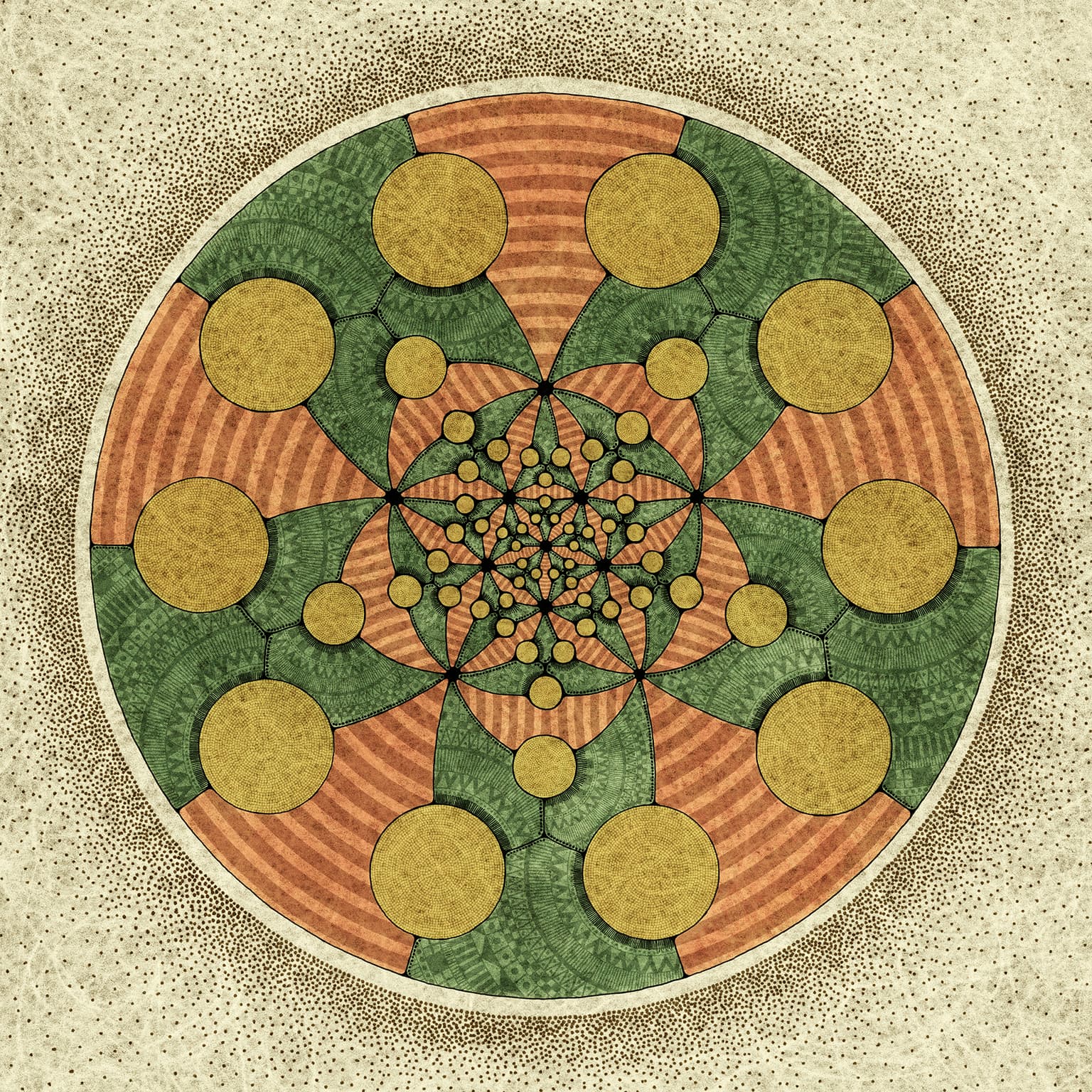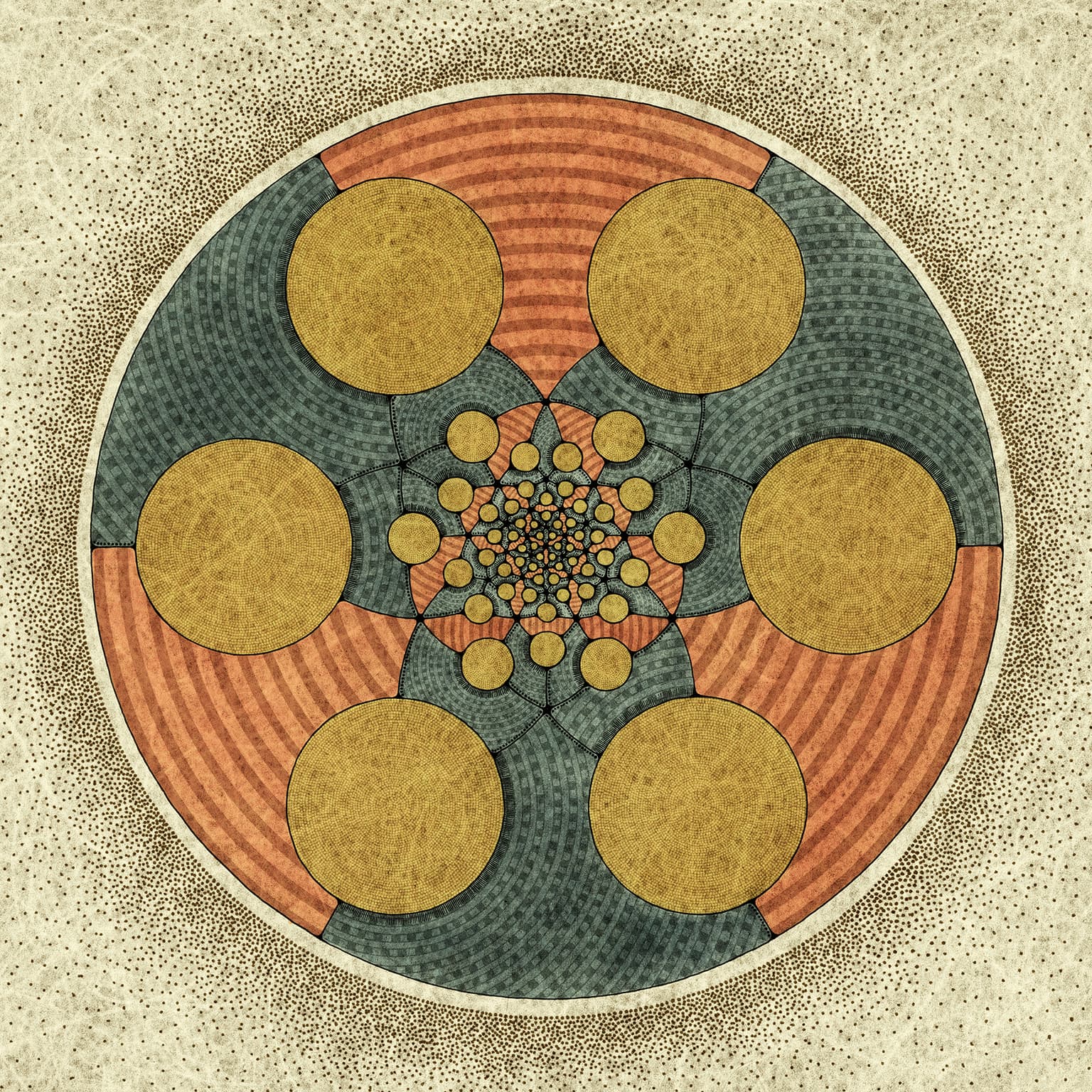Conan Chadbourne
Artists
Conan Chadbourne
San Antonio, Texas, USA
Statement
My work is motivated by a fascination with the occurrence of mathematical and scientific imagery in traditional art forms, and the frequently mystical or cosmological significance that can be attributed to such imagery. Mathematical themes both subtle and overt appear in a broad range of traditional art, from Medieval illuminated manuscripts to Buddhist mandalas, intricate tilings in Islamic architecture to restrained temple geometry paintings in Japan, complex patterns in African textiles to geometric ornament in archaic Greek ceramics. Often this imagery is deeply connected with how these cultures interpret and relate to the cosmos, in much the same way that modern scientific diagrams express a scientific worldview. I am especially interested in symmetry as a mechanism for finding order in the universe, from its intuitive appearance in ancient cosmological diagrams to its important role in modern theoretical physics, and my recent works explore various forms of symmetry.
Artworks

Intrinsic Transformation II
24" x 24"
archival inkjet print
2013

Intrinsic Transformation I
24" x 24"
archival inkjet print
2013